This guide provides biographical information about members of the Chamberlain family whose papers are included in archive material held at the Cadbury Research Library: Special Collections. Reference numbers for individual collections are given at the end of each entry. (Last updated July 2016)
This guide is also available as a Word document (DOCX - 13.2 MB) and PDF (681KB).
The Chamberlain papers consist of:
Joseph Chamberlain
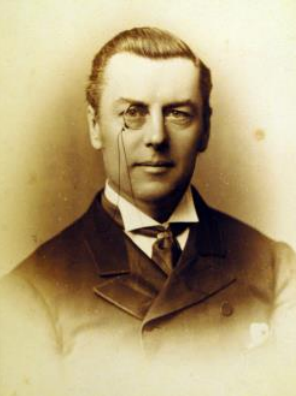
Joseph Chamberlain was born in London in 1836. He was educated at University College School, and at the age of eighteen moved to Birmingham to join his uncle's screw manufacturing business, Nettlefold and Chamberlain. He became a member of the Birmingham Education Society, the National Education League, and was chairman of the Birmingham School Board, 1868-73. He was a member of Birmingham Town Council, 1872-80, being Councillor for St Paul's Ward, and Mayor of Birmingham, 1873-76. He was elected MP for West Birmingham, 1876-1914, and served as President of the Board of Trade, 1880-85; President of the Local Government Board, 1886; and Secretary of State for the Colonies, 1895-1903. He was instrumental in the founding of the University of Birmingham and was its first Chancellor, 1901-1914. He died on 2nd July 1914. Joseph married Harriet Kenrick in 1861. They had two children, Beatrice Mary (1862-1918) and Joseph Austen (1863- 1937). Harriet died after giving birth to Austen. Joseph married Harriet’s cousin Florence Kenrick in 1868, and together they had four children, Arthur Neville (1869- 1940); Florence Ida (1870-1943); Caroline Hilda (1872-1967) and Ethel (1873-1905). Florence died shortly after giving birth to a fifth child who also died soon afterwards. Joseph was married for the third time in 1888, to Mary Crowninshield Endicott. He died on 2 July 1914.
Mary Endicott Chamberlain
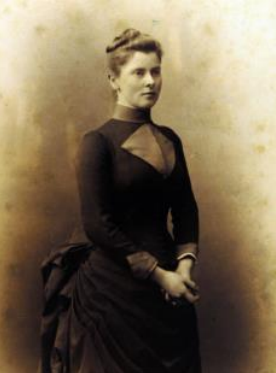
Mary Crowninshield Endicott was born in Salem, Massachusetts in 1864. She was the daughter of William Crowninshield, a lawyer and politician who was Secretary of War in President Cleveland’s administration, 1885-89, and his wife, Ellen Peabody. Mary met Joseph Chamberlain when he was in Washington in 1887 as leader of a diplomatic mission arranged by Lord Salisbury to manage a fisheries dispute between Canada and the United States of America. They became engaged in March 1888, and married in Washington in November 1888. After Joseph Chamberlain’s death in 1914, she married Canon William Hartley Carnegie, Sub-Dean of Westminster Abbey. He died in 1936. Mary died in 1957, aged 93.
Beatrice Chamberlain
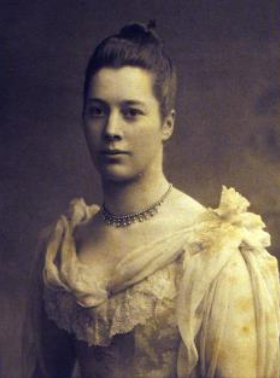
Beatrice Mary Chamberlain was born in Birmingham in 1862. She was the eldest child of Joseph Chamberlain and Harriet Kenrick and was the elder sister of Austen Chamberlain. She was also the eldest half-sister of Neville, Ida, Hilda, and Ethel Chamberlain, Joseph's children by his second marriage to Florence Kenrick, Harriet's first cousin.
Beatrice attended the High School for Girls at Edgbaston, and was then sent to Les Ruches at Fontainbleau, to finish her education. She was taught there by Marie Souvestre who became a lifelong friend. Beatrice returned to Joseph Chamberlain's new home, Highbury, to organise his local political and social engagements there, as well as at his London residence, in Princes Gardens. She continued in this role until Joseph Chamberlain's third marriage, to Mary Endicott, in 1888. Beatrice assisted her brother Austen in his duties as MP for East Worcestershire, after he was elected in 1892. She also helped to establish the Women's Liberal Unionist Association in the constituency and addressed meetings. She continued her involvement with Unionist Associations in Birmingham and East Worcestershire after her move to London in 1915, following Joseph Chamberlain's death.
Beatrice was also interested in social welfare work, particularly with women and children. She was a School Manager in London from the 1890s until her death, and was also active in the Children's Country Holidays Fund for Fulham and Kensington, and Hammersmith during the same period, serving on a number of committees. During the First World War she worked for the British Red Cross, and on Food Economy and War Savings committees. She died on 19 November 1918, one of the victims of the influenza epidemic of that year.
Austen Chamberlain
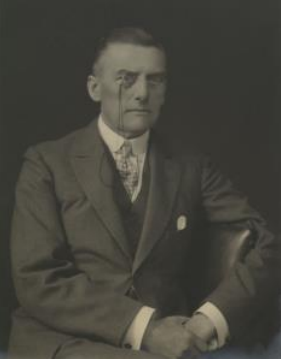
Joseph Austen Chamberlain was born in Birmingham in 1863. He was the eldest son of Joseph Chamberlain and Harriet Kenrick. He attended school at Rugby and read history at Trinity College, Cambridge, 1882-85. He also studied in Paris and Berlin after graduation. Austen was elected Liberal Unionist MP for East Worcestershire in 1892, and transferred to the West Birmingham constituency after the retirement of his father in 1914. He served as Junior Whip, 1893; Civil Lord of the Admiralty, 1895- 1900; Financial Secretary to the Treasury, 1900-1902; Postmaster General, 1902- 1903; Chancellor of the Exchequer, 1903-1905 and 1919-1921; Secretary of State for India, 1915-1917; Leader of the House and Lord Privy Seal, 1921-1922; Foreign Secretary, 1924-1929; and First Lord of the Admiralty, 1931. He was briefly Leader of the Conservative Party, 1921-1922, in Lloyd George’s Coalition Government. As Foreign Secretary, Austen played a key role in securing the Locarno treaties in 1925 which formed a security pact between France and Germany, and were intended to ensure the demilitarization of the Rhineland. Austen Chamberlain was awarded Knighthood of the Garter in 1925 and the Nobel Peace Prize in 1926. Austen married Ivy Muriel Dundas in 1906, and they had three children; Joseph Austen; Beatrice Diane; and Lawrence Endicott. He died on 16 March 1937.
Neville Chamberlain
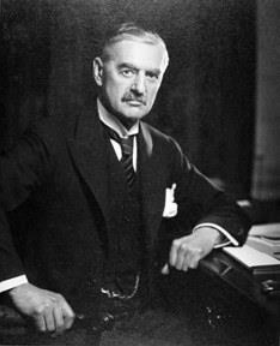
Neville Chamberlain was born in Birmingham in 1869. He was the eldest son of Joseph Chamberlain and his second wife, Florence Kenrick. He attended school at Rugby and also studied at Mason Science College in Birmingham. He managed the family sisal plantation at Andros in the Bahamas, 1890-1897, and returned to Birmingham where he became a Director of Elliott’s Metal Company, Selly Oak; Hoskins & Son, Bordesley; and Birmingham Small Arms Company. He was elected to Birmingham City Council in 1911, and became Lord Mayor of Birmingham in 1915. He established the Municipal Savings Bank in Birmingham in 1916. He was appointed Director General of National Service by Lloyd George in 1916 but resigned the following year. He was elected Liberal Unionist MP for Birmingham Ladywood in 1918, and transferred to Birmingham Edgbaston in 1929. He served as Postmaster General, 1922-1923; Minister of Health, 1923 and 1924-1929; Chancellor of the Exchequer, 1923 and 1931-1937; and Prime Minister, 1937-1940. He was appointed chairman of the Conservative Party in the 1930 and helped to reorganise Conservative Central Office. Neville married Anne Vere Cole in 1911. They had two children; Dorothy Ethel, and Frank Neville. He died on 9 November 1940.
Ida Chamberlain
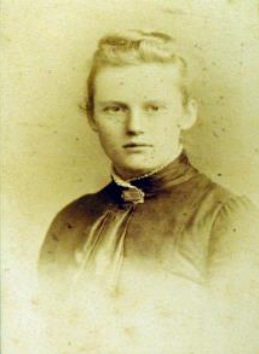
Florence Ida Chamberlain was born in Birmingham in 1870. She was the eldest daughter of Joseph Chamberlain and his second wife, Florence Kenrick, and was the younger sister of Neville Chamberlain. Ida attended boarding school at Allenswood, Wimbledon, along with her sisters Hilda, and Ethel. She and Hilda both undertook voluntary work organising activities for members of the London Pupil Teachers Association in the 1890s. She assisted Neville, who was chairman of the House committee at Birmingham General Hospital in 1911, in establishing an Almoner service there, and became chairman of the Almoners committee. After the death of their father, Joseph Chamberlain, in 1914, Ida and Hilda moved to Odiham, Hampshire, and both sisters became involved in wartime welfare work. Ida assisted Beatrice in her work for the French Wounded Emergency Fund in London, and also worked during 1916 at the Belgravia War Hospital Supply Depot at Grosvenor Crescent. She decided to leave this work at the end of 1916 and take up a position organising the Odiham branch of the Growers Co-operative Union.
Ida was elected Councillor for the Harley Wintney Rural District Council in February 1918, and was chairman of the Housing committee for a number of years. She was also a member of the Guardians committee, and was involved in efforts to improve conditions for children living in 'Poor Law' institutions. She was elected County Councillor for Hampshire in 1922, and served on a number of committees that reflected her interest in housing and public health. She was the first woman to be appointed Alderman for Hampshire County Council in 1931, and returned from retirement to serve as acting chairman of the Health committee during the Second World War, when she also helped to start a British Restaurant in Odiham. She died on 1 April 1943. BC: Beatrice, Ida, Hilda and Ethel Chamberlain papers. Contain correspondence; travel journals; sketchbooks; personal papers; photographs.
Hilda Chamberlain
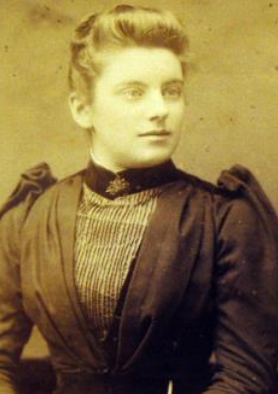
Caroline Hilda Chamberlain was born in Birmingham in 1872. She was the second daughter of Joseph Chamberlain and his second wife, Florence Kenrick, and the younger sister of Neville Chamberlain and Ida Chamberlain. After attending school at Allenswood, Wimbledon, and taking German classes at Mason Science College, Hilda assisted Beatrice Chamberlain in her work for the Children’s Country Holidays Fund in London in the 1890s. She also worked with Ida to arrange events for members of the London Pupil Teachers Association and was a School Board Manager.
When she and Ida moved to Odiham, Hampshire, in 1915, after the death of their father, Joseph Chamberlain, Hilda became involved in wartime agricultural schemes to increase food production and organised the provision of school meals for local children. She established the Odiham branch of the Women's Institute in 1919, and was its first President. She was elected to the Hampshire County Executive of the Women's Institutes in 1921, and served on the Executive and Consultative Council of the County Federation from 1924. She challenged the National Federation of Women's Institutes over the reform of their constitution from 1926 to 1928, eventually being co-opted to that body. In 1935 she was appointed assistant treasurer to the National Federation of Women's Institutes and became treasurer in 1936.
She was a member of the County Nursing Association committee from 1922, and was involved in the reform of services for the provision of nurses for midwifery, district nursing and health visitor duties, as well as the revision of Hospital Contributory insurance schemes for district nursing services. She was elected President of the County Nursing Association in 1937. As well as becoming more heavily involved in the work of the Women's Institute to increase food production and preservation during the Second World War, she was also appointed chairman of the Nursing Emergency committee to recruit volunteers to be part-time nurses in civilian hospitals in 1939. She died on 28 December 1967.
Ethel Chamberlain
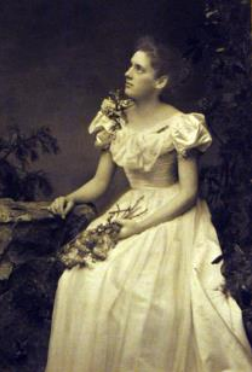
Ethel Chamberlain was born in 1873 in Birmingham. She was the youngest surviving child of Joseph Chamberlain and his second wife, Florence Kenrick and the younger sister of Neville, Ida, and Hilda Chamberlain. Like her sisters, she attended Allenswood School in Wimbledon, and also took German classes at Mason Science College. She married Whitmore Lionel Richards in 1900, and their daughter, Hilda Mary was born in 1901. Ethel had suffered from poor health for much of her adult life, and was increasingly unwell after Hilda Mary’s birth. She was found to be suffering from tuberculosis, and travelled to Switzerland during the winter of 1904 to recuperate, and died at Adelboden on 15 January 1905.